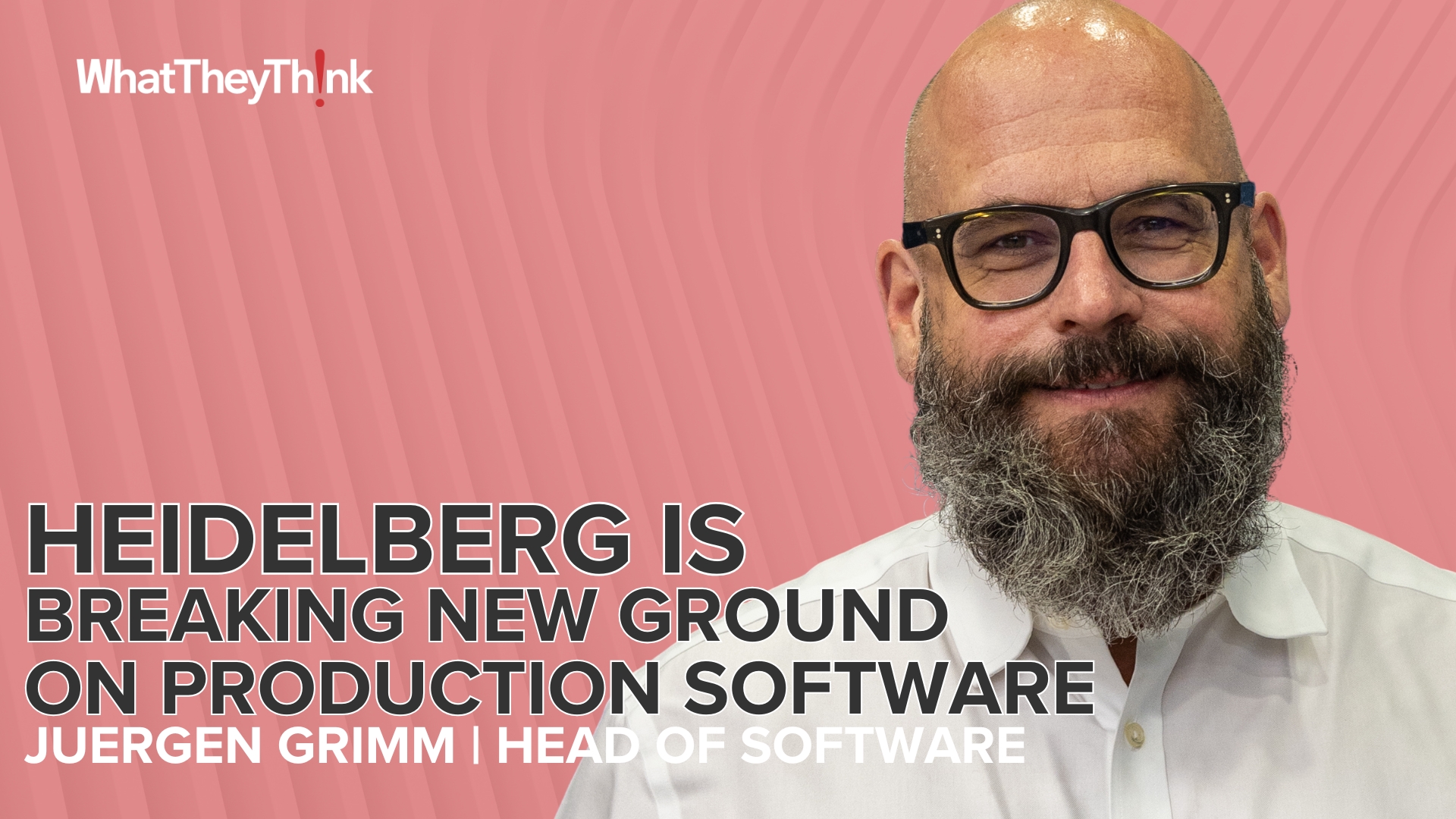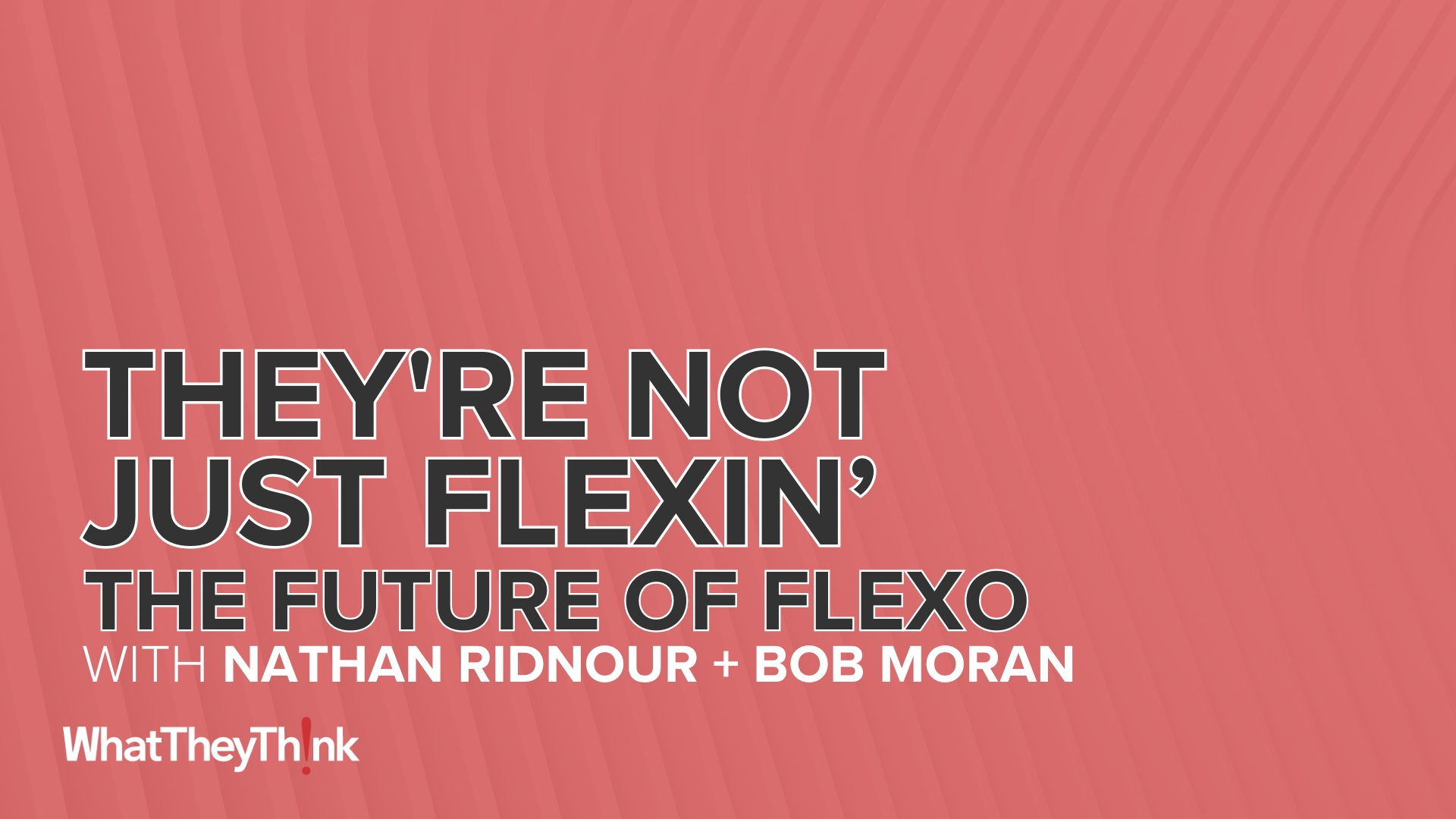Cary Sherburne: Hi, I’m Cary Sherburne WhatTheyThink.com. I’m here with my good friend Martin Bailey from Global Graphics across the pond. How you doing?
Martin Bailey: Pretty good. Getting used to the Chicago temperatures now.
Cary Sherburne: A little cold. Supposed to warm up we hope. You know, we wanted to talk a little bit today about what’s been going on with the Harlequin Rip. Because you guys have made some huge leaps in progress in terms of processing capabilities and so on. And I believe Info Trans wrote a paper about that. Right?
Martin Bailey: Exactly. We’ve been working for a while now to continue the improvements in performance on the Harlequin Rip. Because if you look at what’s happening in high volume digital production, it’s just exploding at the moment. And we came to the point where we said we know this thing is fast, but we’d like to go out and get some external validation of that. Some external input to see whether we really are achieving the kind of performance that we think we’re getting.
So we went to work with Info Trans and they brought in Chris Bondy’s team from RIT to do some actual measurements. To build a test suite for us and to run that through the rip and tell us how fast it was. And they came back with some numbers and we said we knew we were fast, but we didn’t know we were that fast.
Cary Sherburne: Well, that’s great. It’s better than the other way around.
Martin Bailey: It was great.
Cary Sherburne: And so where could people get a copy of this Whitepaper?
Martin Bailey: Whitepaper’s available on our website, which is HYPERLINK "http://www.globalgraphics.com" www.globalgraphics.com and it’s also available on the Info Trans Whitepaper.
Cary Sherburne: InfoTrans.com. So when I, you know, I’m walking around and looking at some of these very high-end production Inkjet. You see like racks of servers that are driving the front end. So tell me the difference. What’s the difference between what you’re doing and these big racks of…
Martin Bailey: Well, we are in those big racks of servers. But you’re right, at the moment driving a very high volume digital production press; you do need quite a lot of hardware and the DFE to drive it. So the benefit to the vendors, to the press vendors in working with us and with our improvements to performance in the rip is they don’t need as much hardware. They can reduce the hardware; reduce their bill of materials putting that DFE together.
And by the way, I never want to talk in green. But this is sort of an accidental green. Because you got less hardware, you got less power consumption and it’s cheaper to run that machine.
Cary Sherburne: So by what percent, I mean, would you say – you can’t really say the average rip ‘cause there’s probably no such thing. But, is there some kind of percentage of improved productivity you can talk about? Or page through put? Or?
Martin Bailey: Well, in terms of performance for variable data over the last two and a half years. We are now something of the order of five to six times faster than we used to be.
Cary Sherburne: Oh, my gosh. That’s huge.
Martin Bailey: It’s a heck of a step up. A heck of a step up. And this is barely for the print service provider, for the user of the press as well. In that they’re paying less for the electricity to run the machine and the service provider has the capability – sorry, the vendor has the capability to not reduce the number of rips quite as much as they might have in terms of performance. And make sure that that thing really can run at engine speeds, day in and day out.
Cary Sherburne: That’s great. Well, congratulations. As Chief Technology Officer I’m sure you had a big hand in this.
Martin Bailey: Not all my work by a long way.
Cary Sherburne: Good team.
Martin Bailey: Yeah.
Cary Sherburne: Thank you very much.
Martin Bailey: Thank you.

 Official camera partner of WhatTheyThink and the drupa daily.
Official camera partner of WhatTheyThink and the drupa daily. 












